Got this one finished today. Near enough to finished anyway- I still need to clean up the front and rear edges of the plate but the best way for me to do that will be with a face mill in the horizontal mill spindle, and I have some other stuff I want to do with the vertical attachment whilst it is on the mill so not going to remove it just yet.
I mounted the workpiece to a big angle plate and used a couple of improvised machine jacks to get the slot leveled (or at least parallel to the mill table) so I could mill the edges parallel with the slot and hole layout. It took all of the X axis movement my mill has to offer to pass a 25" long edge under a 2 1/2" cutter. Not much Z-room left either.
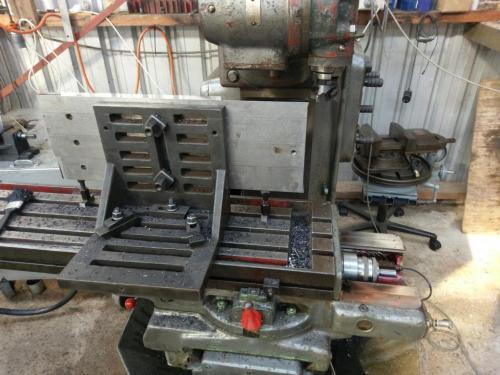
With both the long edges milled parallel, I set the thing up to drill from the underside where the broken carbide drill was living, drilled a 3/8 hole until I came to the broken bit, used a 3/8 end mill to make the bottom of the hole flat and then used a nail punch over the tip of the broken drill to knock it out. No problemo. Glad it was a through-hole.
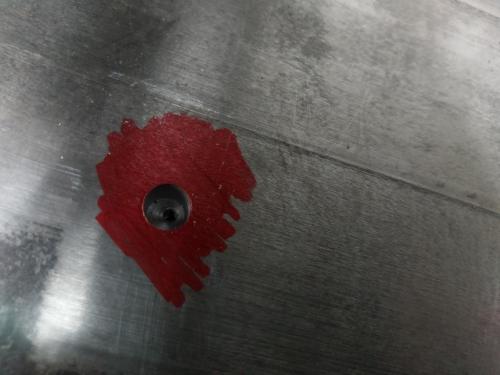
Manhandled the thing over to the drill press to put a little countersink on all of the holes, then over to the shaper to see if it fits.
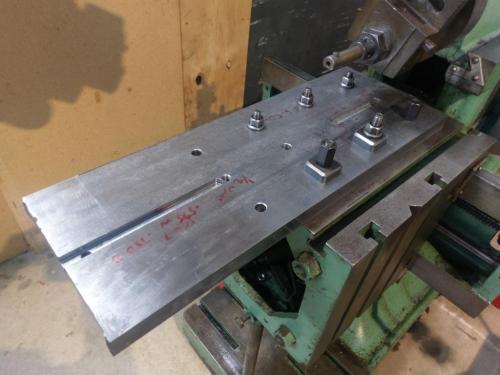
I'm running short of hold-down hardware, have 2 incomplete sets that both seem to be some odd chinese thread size; kind-of 1/2 whit but not really, and the threads are different between the two sets. I think I'll make up some long T-nut strips with the holes 4 1/2" apart for this thing and get some bolts of the appropriate length. For a test fit though, just enough hardware to get by.
The dividing head got a lift from the gantry to get over here.
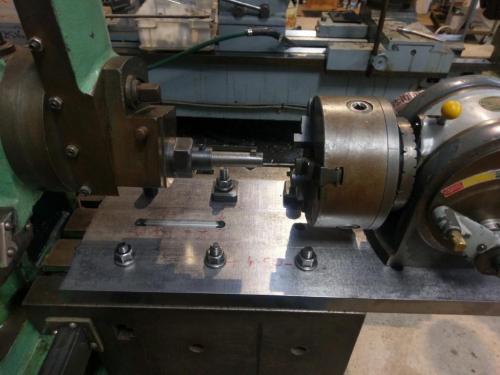
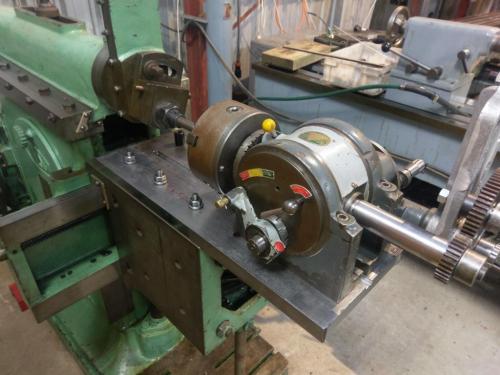
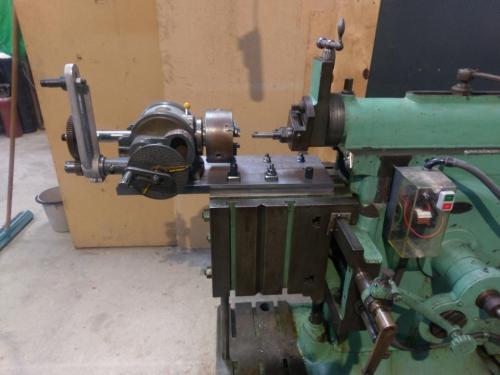
Will be interesting to see how much the plate flexes when taking a cut- I think light cuts will be the order of the day when using this thing.
I'm probably the only bloke in my street set up to cut internal splines in prime numbers.

Lathe (n); a machine tool used in the production of milling machine components.
Milling Machine (n); a machine tool used in the production of lathe components.
 <Tom>
<Tom>
 <Tom>
<Tom>






![[Image: 5841kc2-j07l.png?ver=1402405470]](https://images1.mcmaster.com/mvB/contents/gfx/large/5841kc2-j07l.png?ver=1402405470)

